Safety: The First Step in Every Arts & Crafts Project
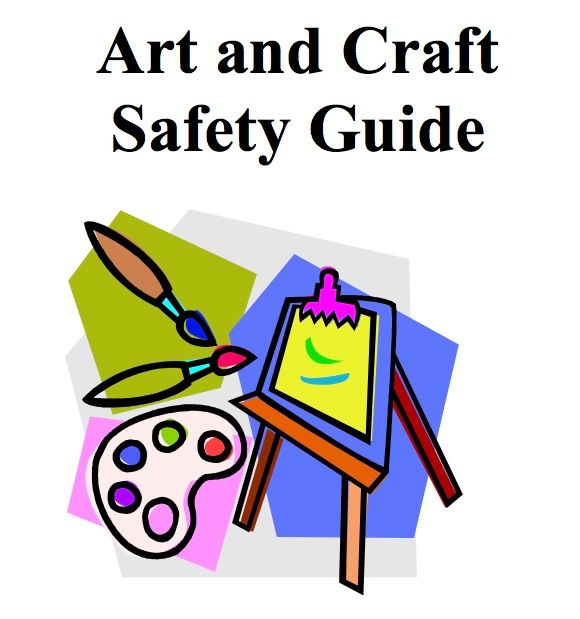 Basic Safety Tips for Arts and Crafts Projects With Young Children
Basic Safety Tips for Arts and Crafts Projects With Young Children
“Every child is an artist. The problem is how to remain an artist once we grow up.” - Pablo Picasso
Kids love arts and crafts, but preschoolers are still very young to be able to handle complicated or potentially dangerous arts and crafts materials. Young children should be introduced to projects that they can handle and enjoy. Developing well planned, educational, creative and age-appropriate art projects is essential in any classroom, and is especially important for preschoolers. Under the age of 3, toddlers need art and craft projects designed especially for them. Three-year olds may need some help with art and craft projects. By age 4-5 years, children will start to draw recognizable objects, although details may be missing.
Hazards
"What child has not tasted glue paste at least once? How often has a child come home from school covered in markers or paint? Despite how common this is, for a parent or a teacher it can be quite frightening. Questions arise such as 'Is it toxic and if so what treatment should be administered?' , 'Will it do permanent damage?'" - American National Standards Institute
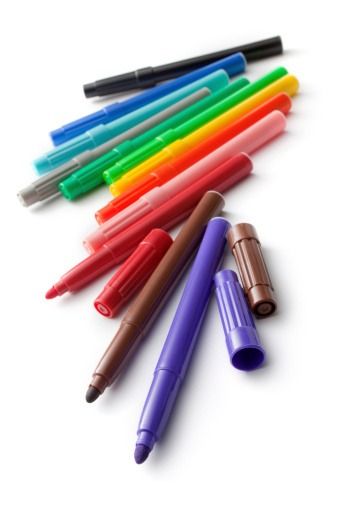 Some things are so familiar, we do not think of them as being potentially hazardous:
Some things are so familiar, we do not think of them as being potentially hazardous:
- Paints
- Glue
- Felt tip markers
- Crayons
The ingredients in many arts and craft supplies include harmful chemicals but safe glues, paints, and markers are available. To reduce risks, use the safe alternatives. Purchase only the amount of materials you need. Take precautions when using art and craft products and dispose of them properly.
Hazardous products must display a POISON sign on the product. “DANGER” means the product is either very toxic, highly flammable, or burns the skin or eyes on contact. “WARNING” or “CAUTION” signals significant hazard. Be mindful of warnings such as "Harmful if swallowed", “Avoid skin contact" or "Flammable". Non-toxic labels should not be taken to mean that the material is completely safe. Product labels may not list all the ingredients of a product. Your childcare center should have a "Material Safety Data Sheet" for all materials used. Safety precautions may not be explained on the labels.
If a label states "use with adequate ventilation", does opening a window provide enough protection? When using these products, you should use a fan or use the product out of doors, or avoid the product entirely. When using a fan, it is best to open a window, place the fan on the opposite side of the work area from the window, and have it blowing toward the window and over the work area, pushing the bad fumes out.
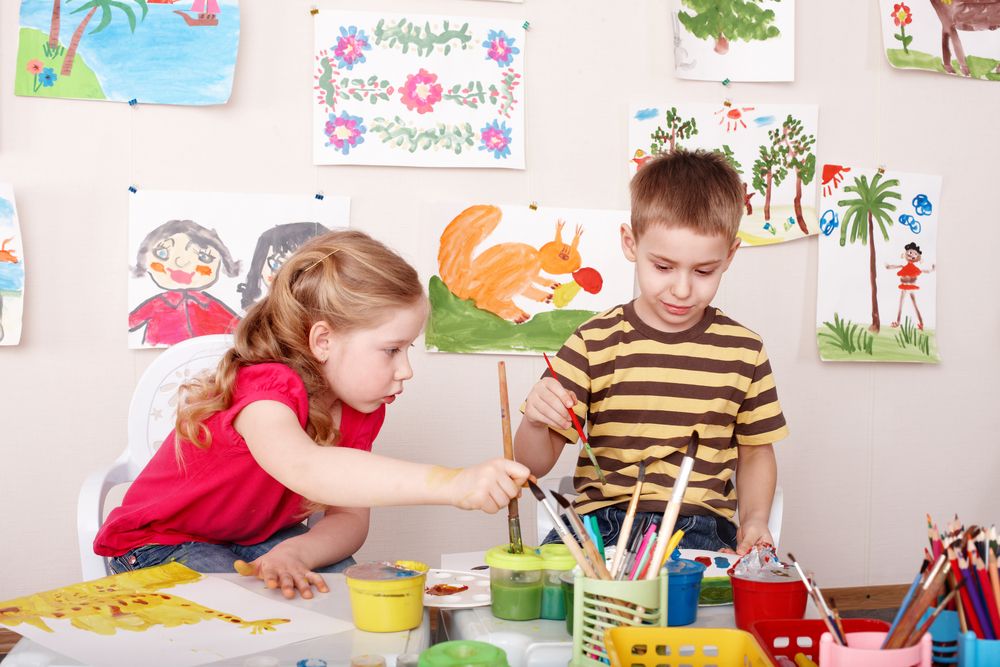 Elmer's glue is very 'low toxic' and works well with paper, cloth, wood, pottery and other porous materials. Using a glue stick can be a better option to mount photographs. Spray adhesives are not recommended. Homemade glue and paste recipes are easy to make. Your preschoolers can use them with all of their art projects.
Elmer's glue is very 'low toxic' and works well with paper, cloth, wood, pottery and other porous materials. Using a glue stick can be a better option to mount photographs. Spray adhesives are not recommended. Homemade glue and paste recipes are easy to make. Your preschoolers can use them with all of their art projects.
Choose watercolor water-based paints. Children should be given only water-based children's paint containing non-toxic pigments. Apply paint with a brush, never a spray. Liquid paints prevent exposure to dust from mixing.
There are 3 kinds of markers:
- Water-based
- Alcohol-based, volatile
- Aromatic solvent-based, the most hazardous
If a marker is labeled "permanent" it is likely to be aromatic solvent-based. If the pen is odorless, or has a slightly vinegar smell, it is likely to be water-based. Water-based markers are the best to use.
Markers for highlighting are generally water-based. For many purposes, permanent or waterproof ink is not necessary. You can substitute water-based markers. An extra benefit of water-based markers is that they are much easier than solvent-based markers to clean up from walls or woodwork. Some felt tip markers are scented with fruit flavor scent. While these markers are not toxic, children who use them may develop the dangerous habit of 'sniffing' markers or putting them in their mouth.
Most children's crayons are made from paraffin wax or beeswax and are considered non-toxic. Imported crayons may contain lead. To be safe, avoid crayons not made in the United States.
Exposure
Exposure to harmful substances can occur when products are:
- Ingested
- Inhaled
- Absorbed through the skin
- Contact with the eyes
Use only non-toxic products. Have the children wash their hands carefully after playing with any art materials.
Reactions
Reactions to exposure can be either "acute" or "chronic". In an acute reaction the effect will occur immediately after using the product. In a chronic reaction the effect will occur over time (months or even years). Products can potentially cause either acute effects or chronic effects or even both.
Emergency Response
Make sure you know the policies for your state and your childcare program! Those requirements will supersede any recommendations that follow.
What would you do in case of the following exposures?
Ingestion
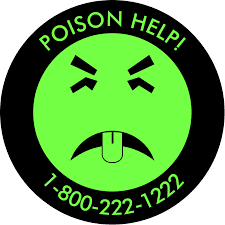 Read the label. If there is a warning is on the label call the Poison Control center. The number should be posted at the phone.
Read the label. If there is a warning is on the label call the Poison Control center. The number should be posted at the phone.- Be ready to provide the Poison Control center with the product ingredients, warning, and any first aid treatment recommended on the label.
- Remove anything remaining in the mouth. Unless victim is unconscious, having a seizure, or cannot swallow, give about 2 ounces of water to drink.
Do not try to neutralize a poison by giving raw eggs, salt water, mustard, vinegar or citrus fruit juices as an antidote or to cause vomiting. Never attempt to induce vomiting by sticking your fingers anywhere in the patient's mouth; this procedure can be very dangerous.
Syrup of Ipecac is not a routine treatment for poisoning. Please contact your Poison Center before using. Activated charcoal is not recommended for home use. It is used to bind drugs and chemicals before they are absorbed into a person, but activated charcoal does not bind all drugs or chemicals and has some risk when given. Important: Only use it when told to do so by the Poison Center.
Inhaled
Vapors from solvents, sprays products and dusts from mixing dry clays can be inhaled into the lungs. Some products may be odorless or even have a fragrant smell, so relying on your nose to alert you to possible danger is not sufficient.
- Get to fresh air as soon as possible. Avoid breathing fumes. Ventilate that area as soon as possible by opening windows or directing fans toward the door, while protecting yourself from injury.
- Call the Poison Control center. If the person is unconscious, having difficulty breathing or not breathing, call 911. Then, call the Poison Control center immediately. Do not wait for symptoms to appear.
Absorbed
- Remove any contaminated clothing.
- Rinse the affected area thoroughly with large amounts of water.
- Wash the same area gently with hand soap and warm water to remove all remaining chemicals on the skin.
- If exposed, remember to wash hair and under fingernails.
- Call the Poison Control center.
Contact with the Eyes
Gently flush eye for 10 minutes, timed by the clock, using slightly warm water. Pour a stream of water from a clean glass held about 3 inches above the eye. If only one eye is affected, be sure the stream does not flow into the non-affected eye. Do not use any eye drops until advised to do so by the Poison Control center. Call the Poison Control Center.
For young children, using a large glass or a pitcher works best. Wrapped in a large towel, lie the child down in the bathtub or with head supported over sink. Pour a gentle stream of water at the bridge of the nose or on the forehead above the affected eye. Do not pour water directly onto the surface of the eyeball. Eyes do not need to be held open unless the child refuses to open them at all. If only one eye is affected, tilt the head so that the water flows away from the other eye.
Federal Regulations
Federal regulations require identification of products which contain ingredients that may cause long-term health effects. Rubber cement containing hexane now carries the warning that "prolonged" exposure can result in permanent damage to the nervous system, while other products that are equally hazardous have no warning at all. Products with no label warnings are considered non-toxic by federal law. "Non-toxic" products can still be fatal to small children. Small amounts may cause serious or unpleasant symptoms.
Safety Do’s and Don’ts
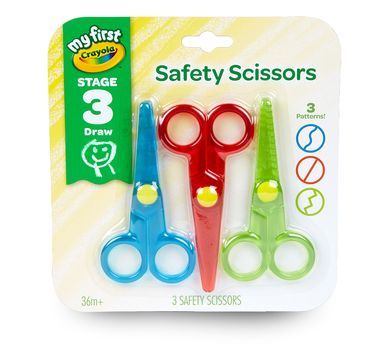 Do…
Do…
- Read the label! Always use products that are appropriate for the individual user. Children in grade six and lower and adults who may not be able to read and understand safety labeling should use only non-toxic materials.
- Wash up after use. Clean yourself, the child, and your supplies.
Don't...
- Eat, drink or smoke while using art and craft materials.
- Use products for skin painting or food preparation unless indicated that the product is meant to be used in this way.
- Transfer art materials to other containers. You will lose the valuable safety information that is on the product label.
To learn more about arts and crafts for young children, try these online classes: